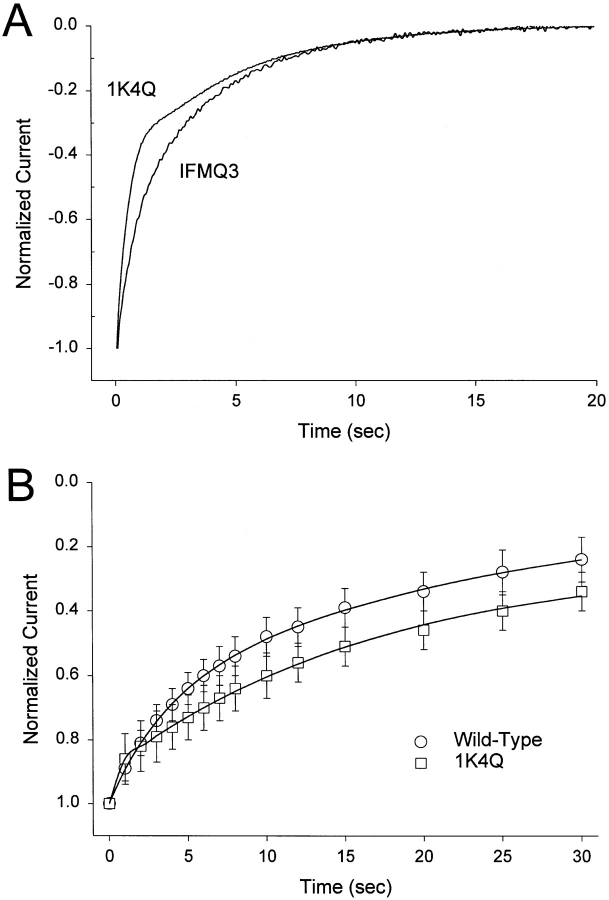Figure 7.
The 1K4Q mutation affects one component of slow inactivation. The kinetics of slow inactivation for the 1K4Q mutant channel were compared with those of the wild-type and IFMQ3 channels. (A) Oocytes injected with RNA encoding either the IFMQ3 channel or the 1K4Q mutant channel in the IFMQ3 (noninactivating) background were examined by two-electrode voltage clamping. The oocytes were held at −100 mV and depolarized to 0 mV for 60 s (only the first 20 s of the records are shown). The kinetics of inactivation for both channels were best fit with two exponential time constants. For the IFMQ3 channel, τ1 = 4.9 ± 0.9 s, A1 = 67 ± 9%, τ2 = 1.0 ± 0.2 s, A2 = 33 ± 9% (n = 5). For the 1K4Q channel, τ1 = 5.0 ± 0.5 s, A1 = 51 ± 8%, τ2 = 0.43 ± 0.06 s, A2 = 49 ± 8% (n = 3). (B) Oocytes injected with RNA encoding either the wild-type channel or the 1K4Q mutant channel in the inactivating background were examined by two-electrode voltage clamping. The protocol was similar to that shown in Fig. 3 except that the conditioning pulse was to a constant value of 0 mV and the duration of that pulse varied from 1 to 30 s. The amplitude of the current during the test pulse (normalized to the current obtained without any conditioning pulse) is plotted versus the conditioning pulse duration. The kinetics were best fit with two exponential time constants. For the wild-type channel, τ1 = 32.5 ± 15.3 s, A1 = 71 ± 12%, τ2 = 3.6 ± 0.9 s, A2 = 36 ± 9%, C = −0.07 ± 0.19 (n = 5). For the 1K4Q channel, τ1 = 14.2 ± 2.2 s, A1 = 62 ± 4%, τ2 = 0.2 ± 0.1 s, A2 = 14 ± 7%, C = 0.27 ± 0.05 (n = 4). Symbols represent means and error bars indicate standard deviations.

